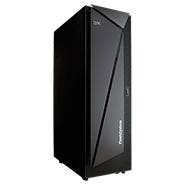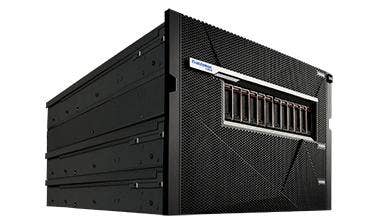IBM Ups All-Flash Storage Ante With Focus On Cloud, Quality Of Service

IBM on Wednesday expanded its family of all-flash arrays with two new high-performance models aimed specifically at connecting customers' IT environments to the cloud.
The Armonk, N.Y.-based vendor also introduced a new all-flash storage array for its high-performance mainframe servers, and said later this year it expects to introduce a model specific to big data environments.
The new product introductions are part of a move to expand IBM's reach in the all-flash storage market, said Eric Herzog, vice president of marketing for the vendor.
[Related: The 10 Coolest Flash Storage And SSD Products Of 2015]
"We see all-flash arrays as important for the full range of user platforms," Herzog told CRN. "So we're expanding the technology to the mainframe and to the cloud."
That expansion is important as IBM plays in a very competitive environment, Herzog said. IBM has the second-largest share of the all-flash storage array market, after EMC, and has the leading position in the software-defined storage business, he said.
Leading Wednesday's news are two new models featuring IBM's FlashCore technology. Unlike standard SSDs, which are used in a majority of all-flash arrays, IBM's FlashCore was custom-built by IBM in partnership with Boise, Idaho-based Micron specifically for use in high-performance flash arrays, Herzog said.
New to IBM is the FlashSystem A9000, which packs up to 300 TBs of FlashCore capacity after compression and deduplication into an 8U enclosure. Performance is up to 500,000 IOPS.
The company also unveiled the FlashSystem A9000R, which scales to a full rack of all-flash storage capacity of up to 900 TBs raw or 1.8 petabytes of effective capacity. It offers up to 2 million IOPS.
Both feature minimum latency of 250 microseconds. Herzog said that latency number is better than it might seem at first glance. "Many all-flash arrays feature latency of 100 microseconds," he said. "But that is with no data services turned on. The A9000 and A9000R latency of 250 microseconds is measured with data services such as replication and security turned on."
Both were also optimized for use in cloud environments, Herzog said. This includes the addition of multitenancy operation, built-in quality of service, and links to IBM SoftLayer and OpenStack clouds.

Those cloud-optimized capabilities are as important as the raw performance, said Jamie Shepard, senior vice president for health care and strategy at Lumenate, a Dallas-based solution provider and IBM channel partner.
In addition to IBM SoftLayer and OpenStack, the new arrays also feature native APIs for Amazon Web Services and Microsoft Azure, Shepard told CRN.
"The new all-flash storage can burst out to the cloud," he said. "IBM's flash development people have been working closely with IBM's cloud development team."
Quality of service on mixed workloads and the ability to offer multitenancy is a huge benefit of the new IBM solutions, Shepard said. "Just look at financial organizations," he said. "They probably want to put all their workloads on flash. But for the end-of-the-year workloads, they don't want to add more capacity. So they can burst to the cloud. IBM is bringing cloud efficiency to the data center."
Also new to the IBM all-flash array lineup is the DS8888, which features IBM's Power8-based controllers along with Fibre Channel and FICON connectivity for use with IBM's mainframe and Power-based server families. The DS8888 fits up to 192 TBs of capacity in a 40U controller, and offers latency of under 1 millisecond and performance of up to 2.5 million IOPS.
Herzog said IBM in the third quarter of this year also plans to introduce an all-flash array designed specifically for big data. Designed in conjunction with SanDisk, the new array, dubbed "Big Data Flash," will target such use cases as clustered scale-out NAS, big data in-place analytics, and OpenStack for files, he said.